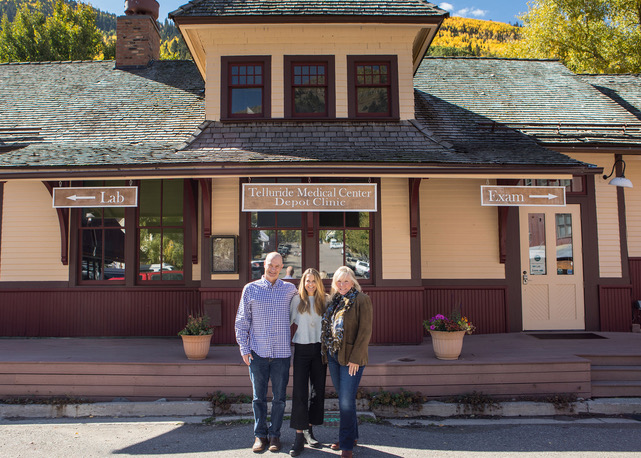
24 Jun Telluride Science Town Talk: “A New Spin on Electrons: How They Change Life and Power Our Lives”!, 6/28!
The fourth Telluride Science Town Talk of the summer takes place at the Telluride Transfer Warehouse on Tuesday, June 28, 2022, 6:30pm. Cash bar opens at 6pm. The talk is titled “A New Spin on Electrons: How They Change Life and Power Our Lives.” In a conversation moderated by Emmy and Peabody award-winning journalists Judy Muller and George Lewis, three highly esteemed scientists will explain chiral induced spin selectivity (CISS) – why it matters and how the effect can be used to create safer medicines and chemicals and also provide the efficient energy that will help power our world in the future.
Visit telluridescience.org to learn more about Telluride Science and the capital campaign to transform the historic Telluride Depot into the Telluride Science & Innovation Center, a permanent home for Telluride Science and a global hub of inspired knowledge exchange and development where great minds solve great challenges.
Go here for more on Telluride Science.

Ron Naaman – Professor Emeritus, Weizmann Institute of Science in Israel.

David H. Waldeck – Professor of Chemistry and Director of the Petersen Institute for Nanoscience and Engineering, University of Pittsburgh.
Since Louis Pasteur’s ground-breaking work in molecular asymmetry back in the 1800s, scientists have come to recognize asymmetry as one of the fundamental characteristics of living matter. The 1920s-era discoveries of quantum mechanics and electron spin laid the foundation for how living organisms work further supported Pasteur’s findings, and the collaborative work of two of this week’s speakers, Ron Naaman of the Weizmann Institute of Science in Israel and David Waldeck of the University of Pittsburgh, brought forth the discovery of the CISS effect.
Through electron transfer, energy and information move from one place to another. This occurs in living things and in electronic devices. The CISS effect greatly affects electron transfer as electrons are selected for transfer based on the orientation of the chiral molecule and the rotation of the electron’s spin.
Scientists refer to the orientation of chiral molecules as left-handed and right-handed, like screws of different rotations they are mirror images of each other. Electrons will spin up or spin down the molecules based on the left or right-handedness of the molecule and the direction of an electron’s spin, making chiral molecules function as spin filters.
The revolutionary understanding of how chiral molecules work has enormous implications. Because of the fundamental research into the CISS effect, scientists and engineers are better able to develop ways to manipulate molecules for humanity’s benefit.
Moh El-Naggar from the University of Southern California joins the panel as another collaborator with Naaman and Waldeck.

Moh El-Naggar – Dean of Physical Sciences, and Professor of Physics, Biological Sciences, and Chemistry at the University of Southern California.
El-Naggar’s lab investigates biological electron transfer and energy conversion. He is director of a Department of Defense-funded, multi-university research initiative on Living Electronics; his work has a major impact on renewable energy, biofuels, and environmental remediation. With Naaman and Waldeck, El-Naggar is working with bacteria to control the spin of electronics through the spin selectivity phenomenon, opening the possibility to build biological batteries and fuel cells where bacteria treat waste and convert it to electricity. Similarly, they can reverse the process, inject electricity – for example from solar panels – into microbes that capture carbon dioxide to make biofuels.
El-Naggar, Naaman, and Waldeck are joining 36 other leading scientists and engineers for this week’s Telluride Science workshop on the Electronic and Magnetic Properties of Chiral Structures and their Assemblies. Following the departure of the Telluride Medical Center, this will be the first workshop to utilize the Telluride Depot since Telluride Science purchased the building in October of 2020.
Doors open at 6:00pm on June 28th at the Telluride Transfer Warehouse located at 201 S Fir Street. This free public event is presented by Telluride Science. With a network of over 5,000 preeminent scientists from over 90 countries and 500 institutions, Telluride Science generates the fundamental knowledge base for new solutions in many fields, including energy, medicine, water, climate, national security, and advanced materials for computing and manufacturing.


Sorry, the comment form is closed at this time.